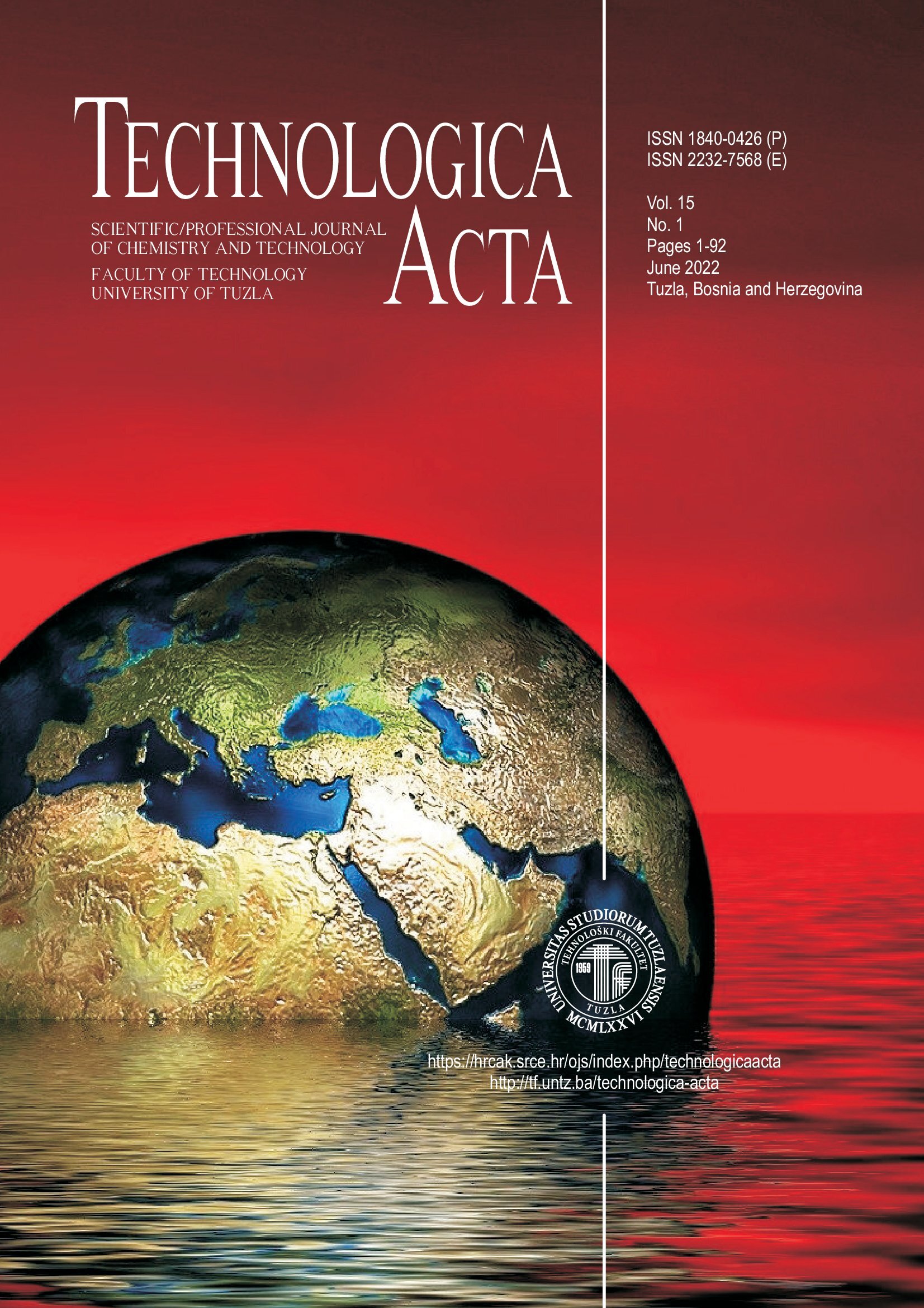Electrochemical removal of hexavalent chromium by electrocoagulation
Keywords:
removal efficiency, current density, irone anodeAbstract
Chromium in wastewater is discharged from tannery, electroplating, metal finishing, dying industry and many other industries. Presence of hexavalent chromium (Cr(VI)) in the environment considerable concern because it is non-biodegradable, highly toxic and carcinogen. There are several treatments for the removal of chromium from wastewater, but the most common method involves reduction to its less toxic trivalent state. In this paper electrocoagulation was used as treatment for removing of hexavalent chromium from synthetic prepared wastewater initial concentration 50 mg/L, in presence of sodium chloride as supporting electrolyte (1 g/L). The treatment was perform in a batch electrochemical reactor 250 mL capacity and with possibility of constant stirring. It was examined the impact of electrode materials and current density (5, 10, 20 mA/cm2) on Cr(VI) removal efficiency. The examination showed that iron has higher removal efficiency compared to aluminium. Also, it was observed high efficiency at very begin of treatment and at low current density. For 20 minutes of treatment it was achieved almost complete Cr(VI) removal at current density of 5 mA/cm2 by using iron electrodes (E= 99.8 %).
Downloads
Published
Issue
Section
License
Copyright (c) 2022 Borislav N. Malinovic, Tijana Djuricic, Dajana Dragic, Rade Malesevic, Drazenko Bjelic

This work is licensed under a Creative Commons Attribution 4.0 International License.


